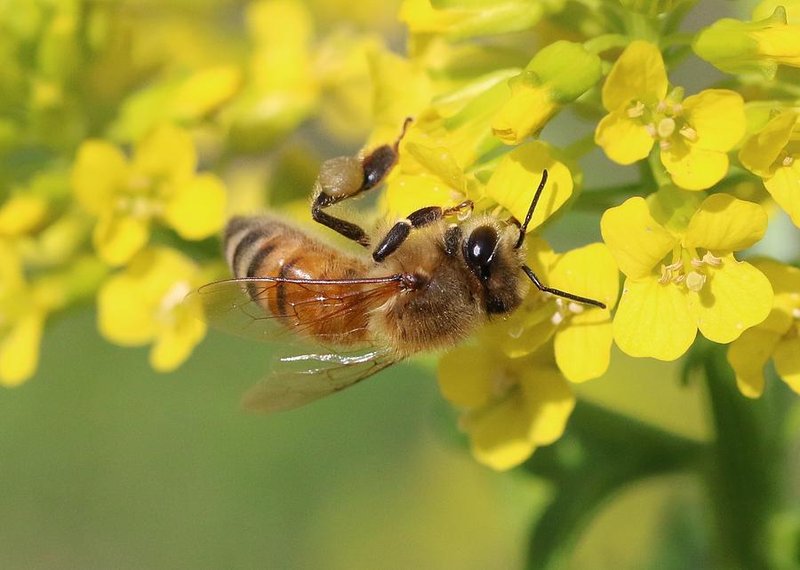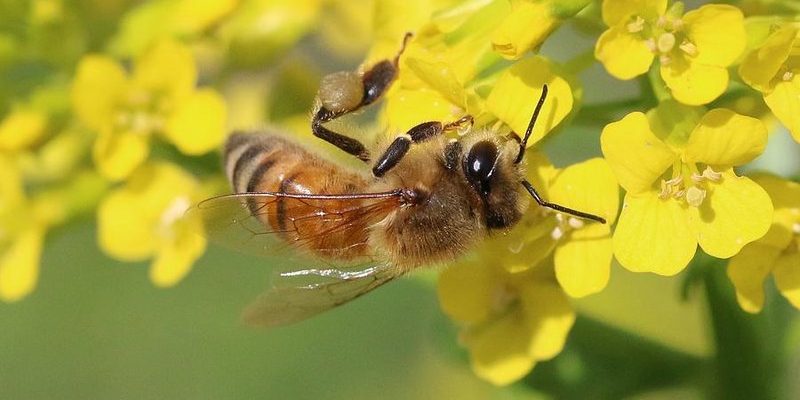
Have you ever watched a honeybee buzzing around flowers, collecting nectar, and felt a rush of curiosity? Honeybees are fascinating little creatures, known not just for their role in making honey but for their complex social structures and vital role in our ecosystems. These tiny insects are more than meets the eye, playing a crucial part in pollinating plants and crops, which is essential for food production. In general terms, honeybees belong to the species Apis mellifera, and they are truly remarkable for their intricate behaviors and communal living.
Honeybees work in harmony within their colonies, showcasing a captivating social order. They live in hives, where each bee has a specific role to play. From the diligent worker bees that collect pollen and nectar to the queen bee who lays eggs, every member contributes to the hive’s success. As you learn more about honeybees, you’ll discover how dedicated they are to their purpose and how they communicate through dance to direct each other to the best food sources. It’s downright mesmerizing!
Quick Facts about Honeybees
| Scientific Name: | Apis mellifera |
| Size: | About 0.5 to 2 inches long |
| Habitat: | Widely distributed across the globe, preferring temperate climates |
| Diet: | Nectar and pollen from flowers |
| Speed: | Up to 15 miles per hour |
| Lifespan: | Worker bees: around 6 weeks; Queen bees: up to 5 years |
Physical Characteristics of Honeybees
Honeybees are small yet mighty insects, measuring about 0.5 to 2 inches in length, depending on the species and caste. They are easily recognizable by their fuzzy bodies, which are covered in tiny hairs that help them collect pollen. Their coloration typically ranges from golden yellow to dark brown, often with bands of color that serve as camouflage among flowers.
These bees have large, compound eyes that provide excellent vision, allowing them to spot flowers and navigate their surroundings effectively. Their antennae are not just for show; they serve a vital role in sensing smells and tastes. They also have specialized mouthparts that allow them to sip nectar and consume pollen, making them well-equipped for their roles as foragers. It’s pretty amazing how designed they are for their jobs!
Social Structure of Honeybee Colonies
A honeybee colony is a well-organized society, often home to thousands of bees, all working together for the colony’s health and productivity. At the heart of this community is the queen bee, the sole fertile female. She is responsible for laying eggs and is crucial for maintaining the colony’s population. It’s fascinating how the queen can lay up to 2,000 eggs a day during peak season!
Surrounding the queen are the worker bees, which are infertile females. They perform various tasks, from cleaning the hive and tending to the queen to foraging for food and protecting their home. Worker bees communicate through dance – yes, dance! The famous “waggle dance” indicates the direction and distance of food sources, demonstrating a level of communication that’s astounding for insects.
Life Cycle of a Honeybee
The life cycle of a honeybee consists of four stages: egg, larva, pupa, and adult. It all starts when the queen lays a tiny egg in the hive’s cells. After three days, the egg hatches into a larva, which is then fed by worker bees with royal jelly, pollen, and nectar. This larval stage lasts about six days, during which the bee grows significantly. Once it reaches its full size, it enters the pupa stage, where it undergoes metamorphosis.
After about two weeks, an adult honeybee emerges from the cell. The entire process, from egg to adult, can take around 21 days. The role a bee takes on depends on its age and the needs of the colony. Younger bees tend to work inside the hive, while older ones venture out to gather food. It’s a continuous cycle that ensures the colony thrives and adapts to its environment.
The Importance of Honeybees to Ecosystems
Honeybees play a pivotal role in our ecosystems by serving as pollinators for a wide variety of plants, including many fruits, vegetables, and nuts that we rely on for food. When they collect nectar, they inadvertently transfer pollen from one flower to another, facilitating plant reproduction. This not only helps plants thrive but also supports biodiversity. Imagine a world without apples or almonds – that’s a future without honeybees!
Research shows that around 75% of the crops we consume rely, at least in part, on pollination by insects, and honeybees are among the most effective pollinators. However, their populations are declining due to habitat loss, pesticides, and diseases. This decline can threaten food security and the health of our ecosystems. It’s something we all need to care about if we want to protect these vital bees and, by extension, ourselves.
How to Help Protect Honeybee Populations
There are several simple yet effective ways you can help protect honeybee populations. One of the most impactful actions is to plant bee-friendly flowers in your garden or yard. Native plants, herbs, and wildflowers provide essential food sources for bees. In addition, avoiding the use of pesticides and herbicides can create a safer environment for bees to thrive.
Another way to support honeybees is by purchasing local, organic honey. This not only ensures that you’re consuming ethically sourced products but also helps support local beekeepers who are dedicated to maintaining healthy bee populations. You might even consider joining a local beekeeping club or attending workshops to learn more about how to care for bees while promoting their well-being.
Honeybee Products and Their Uses
Honeybees provide us with several amazing products, the most famous being honey. This sweet, viscous substance is not just delicious but also packed with health benefits. Raw honey is known for its natural antibacterial properties and can be used as a remedy for coughs, sore throats, and even skin issues.
Besides honey, honeybees produce beeswax, propolis, and royal jelly—each with its unique uses. Beeswax is often used in candles, cosmetics, and food wraps. Propolis, a resin-like material, is utilized for its antiseptic properties and is commonly found in natural health products. Royal jelly, a nutrient-rich substance fed to the queen, is marketed for its supposed health benefits, including boosting the immune system and promoting youthfulness.
Frequently Asked Questions
What is the main role of a queen bee?
The queen bee primarily serves as the colony’s egg-layer. She is responsible for maintaining the hive’s population and is the central figure around which the colony revolves. Beyond laying eggs, the queen emits pheromones that help regulate the behavior of worker bees and maintain order in the colony.
How long do honeybees live?
The lifespan of honeybees varies significantly depending on their role. Worker bees typically live for about six weeks, mainly because they exhaust themselves by foraging for food. In contrast, queen bees can live for several years, as their primary role involves laying eggs and remaining in the hive.
Why are honeybees important for agriculture?
Honeybees are vital to agriculture due to their role as pollinators. Approximately 75% of the world’s food crops rely on pollination, and honeybees enhance the yield and quality of fruits, vegetables, and nuts. Without them, many of our favorite foods would become scarce.
What can I do to support honeybee conservation?
You can support honeybee conservation by planting bee-friendly flowers, avoiding pesticides, and purchasing local honey. Additionally, engaging with local beekeeping communities can help spread awareness and promote practices that protect bee populations.
Are honeybees aggressive?
Generally, honeybees are not aggressive unless they feel threatened. They will defend their hive, but outside of that context, they are usually focused on their tasks. Understanding their behavior can help reduce any fear of being stung.
How do honeybees communicate?
Honeybees communicate through a variety of methods, including pheromones and dances. The “waggle dance” is a famous form of communication used to inform other bees about the location of food sources. It’s fascinating how such small creatures can convey complex information!
Can honeybees make honey from any flower nectar?
While honeybees can collect nectar from many flowers, the flavor and quality of honey can vary widely depending on the types of nectar collected. Some popular floral sources for honey include clover, orange blossom, and wildflower. The diversity of flowers influences the uniqueness of the honey’s taste.
What is the difference between honeybees and other bees?
Honeybees are social insects that live in large colonies, whereas many other bee species are solitary. Honeybees are specifically known for their ability to produce honey and wax, while other bees may not have this capability or may have different nesting habits. Understanding these differences can help in recognizing their unique roles in our ecosystems.
Do honeybees hibernate?
Honeybees don’t truly hibernate but do enter a state of reduced activity during winter months. They cluster together in their hives to maintain warmth, relying on their stored honey as food. This group behavior is crucial for their survival during the cold months.
How can I identify honeybees in my garden?
Honeybees can be identified by their distinctive fuzzy bodies, which are darker during the colder months. They tend to move from flower to flower, collecting pollen as they go. Observing their behavior can help you confirm their presence in your garden.
What do honeybees do in the winter?
During winter, honeybees remain inside their hives, forming a tight cluster to keep warm. They consume the honey they stored during the warmer months as their food source. This survival tactic allows the colony to endure the cold until spring returns.

